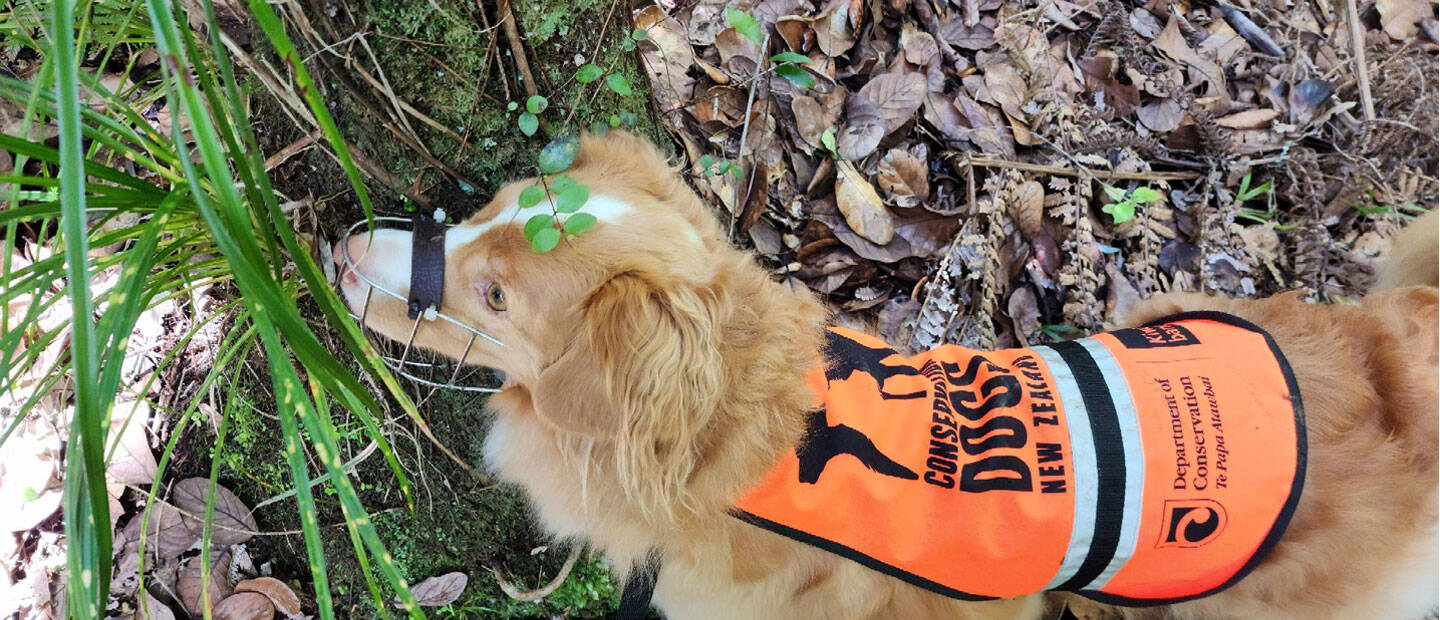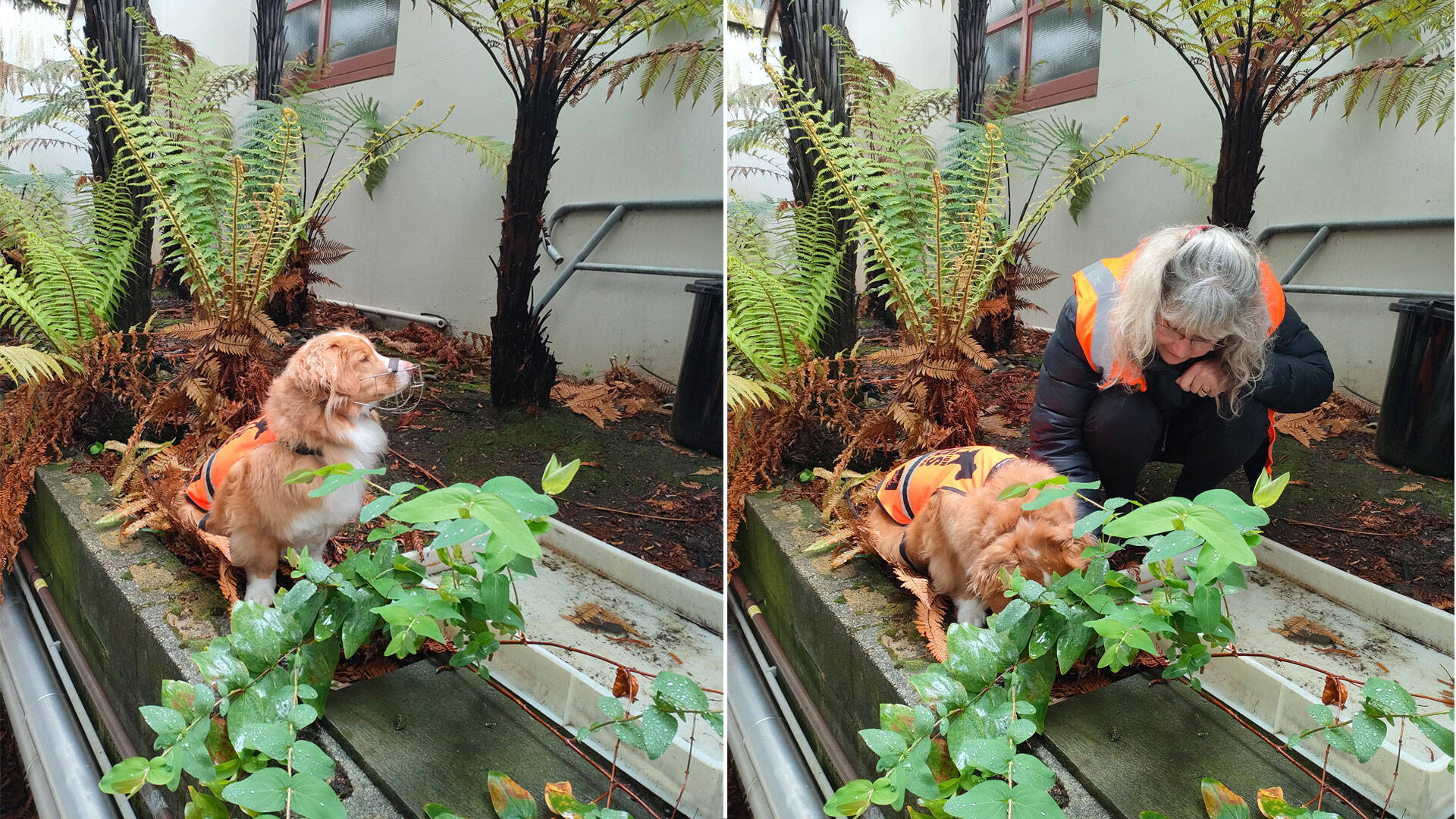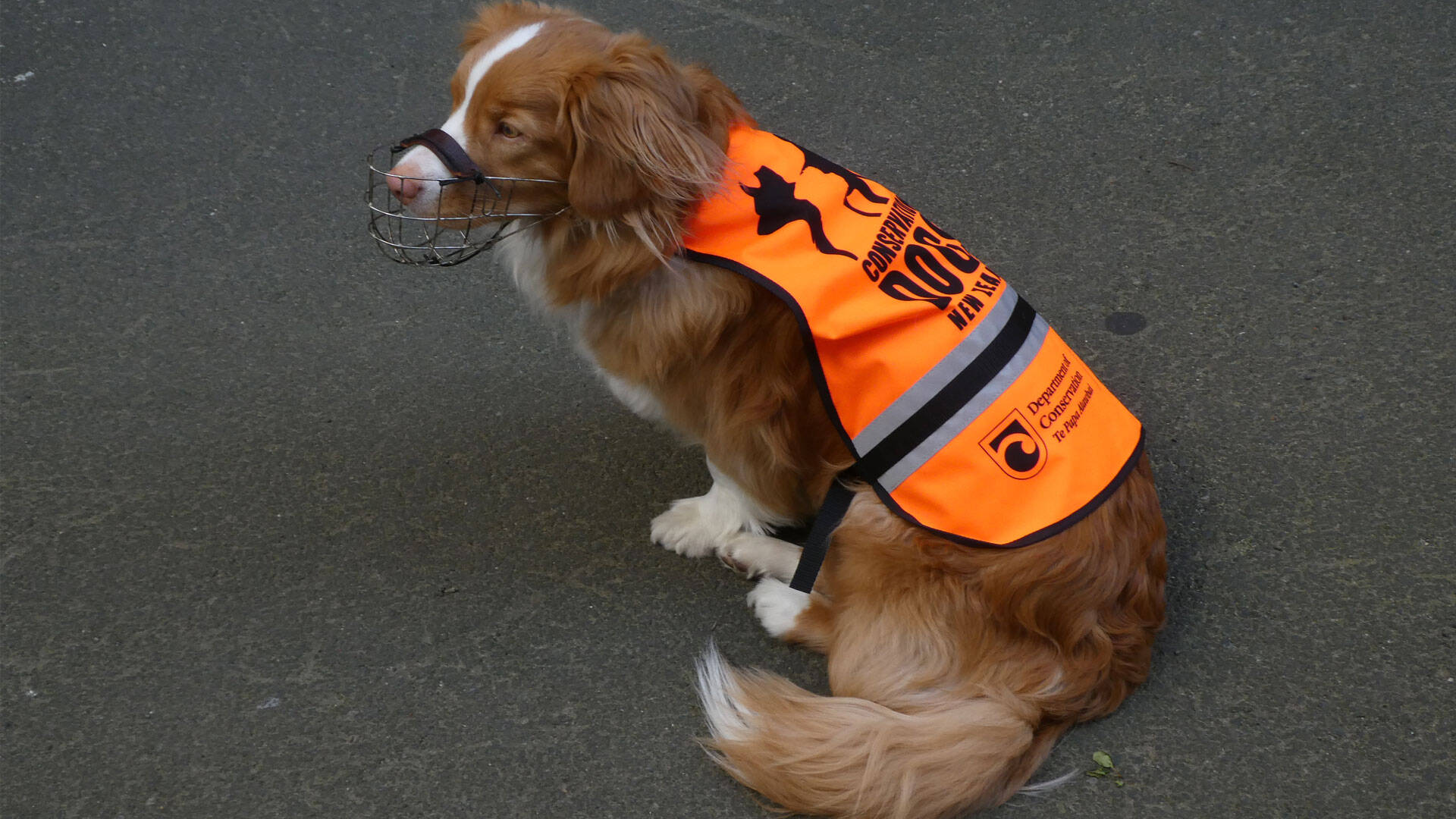Owing to the logistical implications and restrictions of the Covid-years, and more recently storms and floods, most of Holly’s training has taken place in the buildings and grounds of the University of Otago, Zoology Department in Dunedin where Phil worked. “This has been possible owing to the small groups of endemic frogs maintained at the university, which without the ongoing support of the Zoology Department, this training would not have been possible, something I’m hugely grateful for” explains Debbie.
“Initially we introduced Holly to a dummy odour by using small cut pieces of a dog toy called KONG which provided a steppingstone before transitioning to the scent of Archey’s frogs, as well as providing us with a scent to use outside of the University for getting field ready. Following a careful welfare review and approval from the university’s ethics committee, we progressed to placing frogs in closed but ventilated containers of different sizes and materials (e.g., plastic, glass, stainless steel), hidden in different places. These ranged from kitting a room out with planks and pot plants to utilising the university’s garage space or the atrium which has several tree ferns. To make things more challenging, we introduced other distractions like containers with only leaf litter, worms, or feathers – things she’d encounter in the wild. For much of this, I worked alongside student, Tegan Murrell, who used some of this project as part of her MSc thesis, and it was hugely beneficial bouncing ideas off each other.”
Like all animal training programmes, positive reinforcement has been key to Holly’s training. On successfully locating Archey’s frogs, Holly’s indication would be to sit, point with her nose and wait for Debbie, who would then say, ‘yes’ and give her a small food reward, or say, ‘find next’ and Holly would continue searching and finding frogs.





